Not all image-based OSINT work is about geolocation. It is always helpful to know where a photo was taken, but knowing when an image was taken can be just as important when trying to verify it. Is this a COVID-hit Italian hospital, or the aftermath of an earthquake in Croatia? Are these food packages left for Coronavirus survivors in India or are they really from a Turkish earthquake that took place before the pandemic? If it is possible to establish when a photo was taken then the easier it will be to determine if it really shows what it claims to. Yesterday’s Quiztime challenge from Julia Bayer was a good opportunity to practise some of the skills that help to identify when a photo was taken. Here’s the photo:

The question we need to answer is whether or not this photo was taken before or after lockdown. To do this we need to know where the image was taken so we can research the relevant country’s lockdown start and end dates. Fortunately in this case the geolocation is quite easy; we can see a sign for the Alexanderplatz U-Bahn station so we know this was taken in Berlin, from approximately here:

The lockdown in Berlin was implemented in different sectors from about 19th March 2020 onwards. The lockdown is being gradually lifted there as of 6th May 2020, so we need to look for information in Julia’s photo that will help to decide if this image was taken before 19th March or after 6th May. To do this we will extract as much detail as we can from the image, see what these details can tell us about times and dates, and then assess whether these details mean it was more likely that the photo was taken before or after lockdown. Let’s look at the first clue:
1. The Trees

There are two trees visible on the left side of the image. They have no leaves on them so it might be better to assume the photo was taken before lockdown, and not afterwards. Case closed, too easy – right? Not necessarily. Assuming is always dangerous and with more complex OSINT puzzles it will catch you out if you take things for granted without checking them first. It’s much more important to be able to find proof to support an argument rather than just assume it and hope for the best. So how can we do that? There are a few ways, but one of the most direct is to access a live feed of one of the many webcams that broadcast live from Alexanderplatz. This feed transmits from the Park Inn Hotel (which is just out of shot in Julia’s original photo) and also contains an archive of time lapse footage (accessed from the pop-up menu on the right of the screen). This means we can check what the trees in Alexanderplatz looked like on 6th May, when the Berlin lockdown began to be lifted:
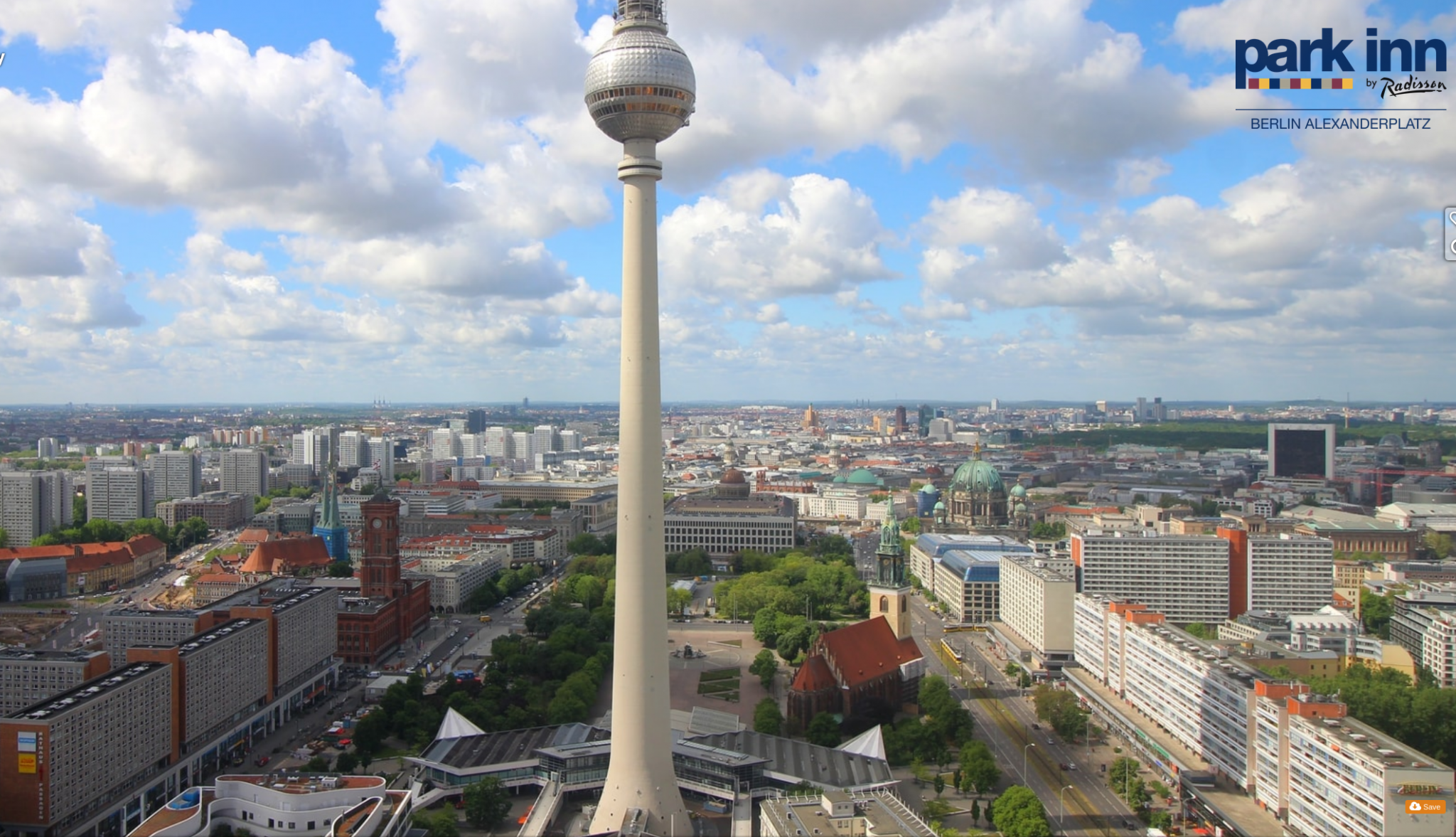
We can show that on the day lockdown ended the trees were green and full of leaves, so now we know (rather than just assume) that the photo was taken before the lockdown started.
2. Cold Weather Clothing

What are people in the picture wearing? Most of them are wearing thick coats and a few have hats and scarves. Once again it would be easy to automatically assume that this means the photo was taken in the colder weather before lockdown started. It wise to be cautious with weather though; last weekend I got sunburn while out in my garden but three days later and it’s freezing cold, so trying to judge a date from a single snapshot in time could be risky. It’s much better to try and find a reliable source of information to back up our hypothesis. Using Wolfram Alpha’s historic weather database we can see that the weather in Berlin has been fairly mild since lockdown ended:
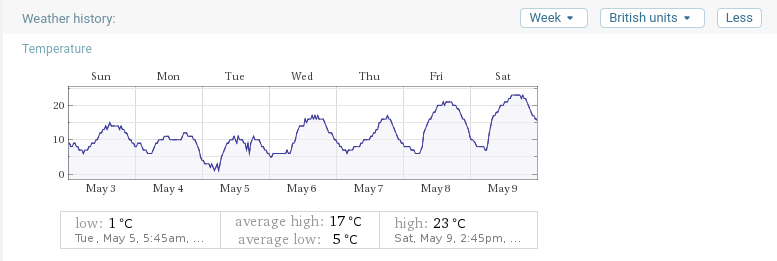
Now compare it to the week leading up to lockdown when it was much colder:

Although we don’t know that this image was taken in the week before lockdown, we can show objectively that it was consistently colder in the time before lockdown than during the time since it was lifted, so the coats and hats indicate the image was most likely taken before lockdown. This might seem like an excessive way to prove a simple point, but the aim is to cultivate good verification habits. Most real-life OSINT puzzles are rarely so obvious, and it is always necessary to provide evidence to support each part of your case. Arguments made without evidence can be dismissed without evidence, so it is important to be able to prove even the small things.
3. The C&A Sale
The trees and seasonal clothing might be the easiest way to chronolocate this image, but what other clues are there? On the upper left of the photo we can see the Alexanderplatz branch of C&A. It appears to be having a sale, and a quick check of the C&A website shows that they’re having a sale now too – so could this be of any use? It’s tricky because retailers have sales all the time, so the fact there is a sale does not prove whether this photo was taken before or after lockdown. We need to dig a little deeper first.. The C&A website has some current information about which of its stores have reopened since the Coronavirus lockdown began to end:
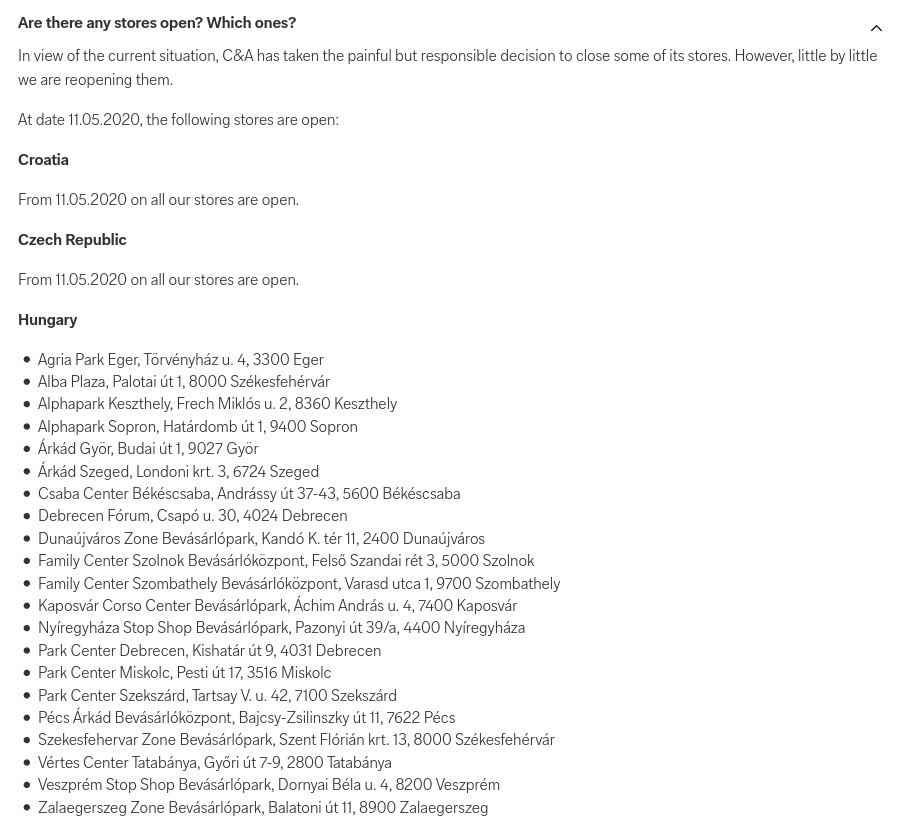
None of their German stores are open yet, so it seems unlikely that this image was taken after the lockdown ended. Researching the C&A hashtag #BestDeal also isn’t too helpful. It’s been one of their marketing slogans for several years so it by itself it doesn’t help to narrow down when the image was taken. We could at least set some time parameters for the earliest possible date this image was taken. It’s beyond the remit of the quiz, but it would be useful to see if we can say that the image was take no earlier/later than a specific date. The marketing material on display in the C&A window can help a little with this. Here it is as it appears in Julia’s photo:

We can check images that people have uploaded from the area in front of the C&A store by visiting the location on Google Maps and see if the same material appears. From this image we can see that these same adverts were in place as far back as August 2019:

I couldn’t find any matching images earlier than that date, so it must have been present since at least then.
4. The Photographer’s Position?
From the angle of the picture we can work out that Julia took the photo from Alexanderplatz 3, which houses the Saturn electronics store:
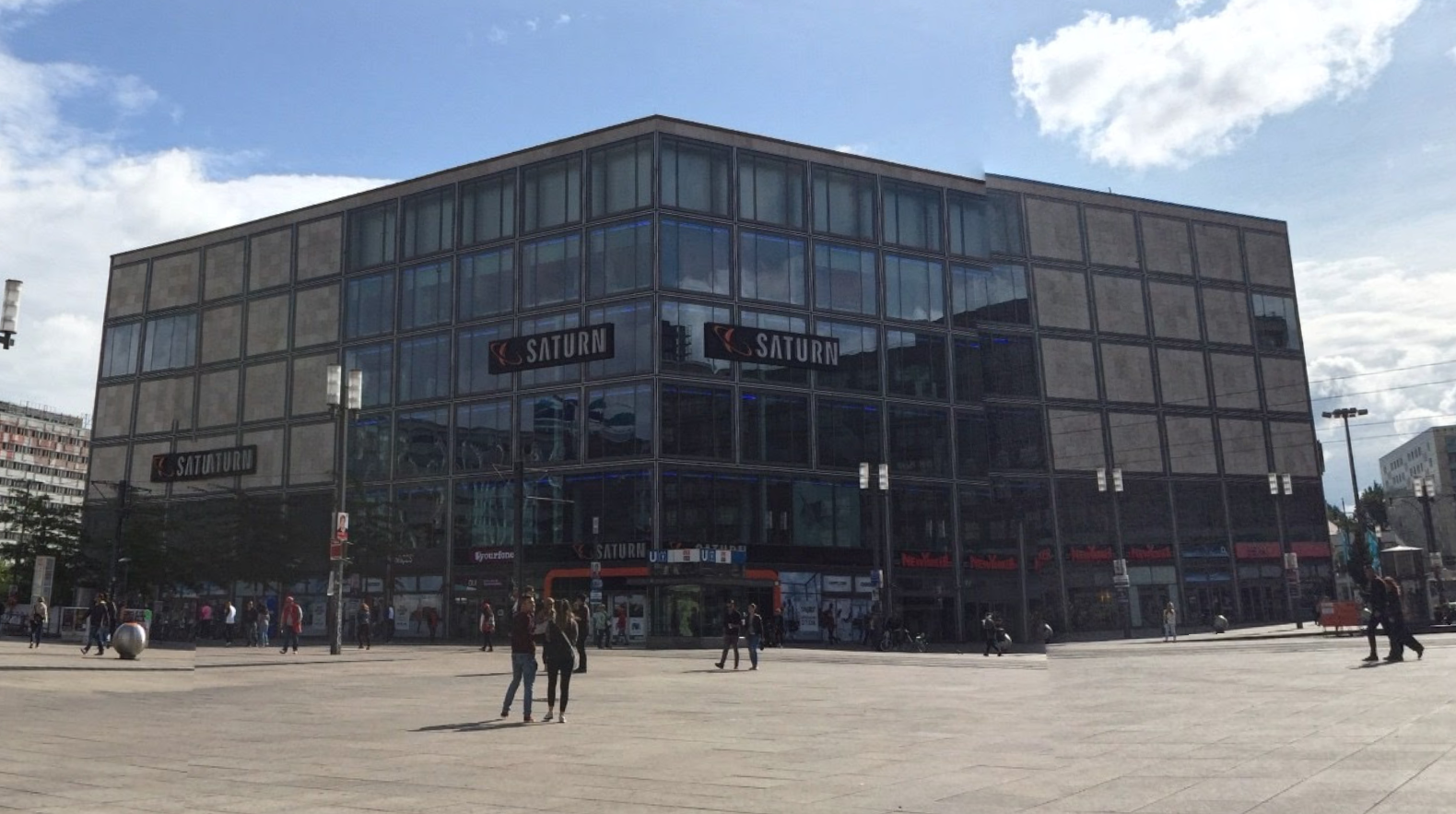
Unlike C&A, Saturn have reopened their store in Alexanderplatz, so the fact that Julia was inside this building does not help to confirm whether this picture was taken pre or post-lockdown,
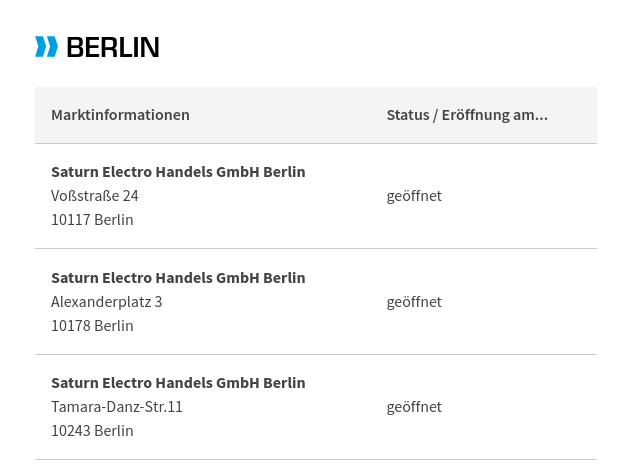
5. The Galeria Kaufhof Advert
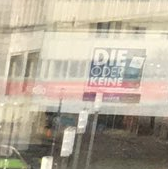
It’s a small detail, but there’s an advert on the right of the picture that says “DIE ODER KEINE” (“This or none at all”). It’s a promotional message for Galeria Kaufhof’s new loyalty card and app. The company withdrew from their previous reward scheme in January this year and this advert for a replacement reward card and app was published from early January onwards:
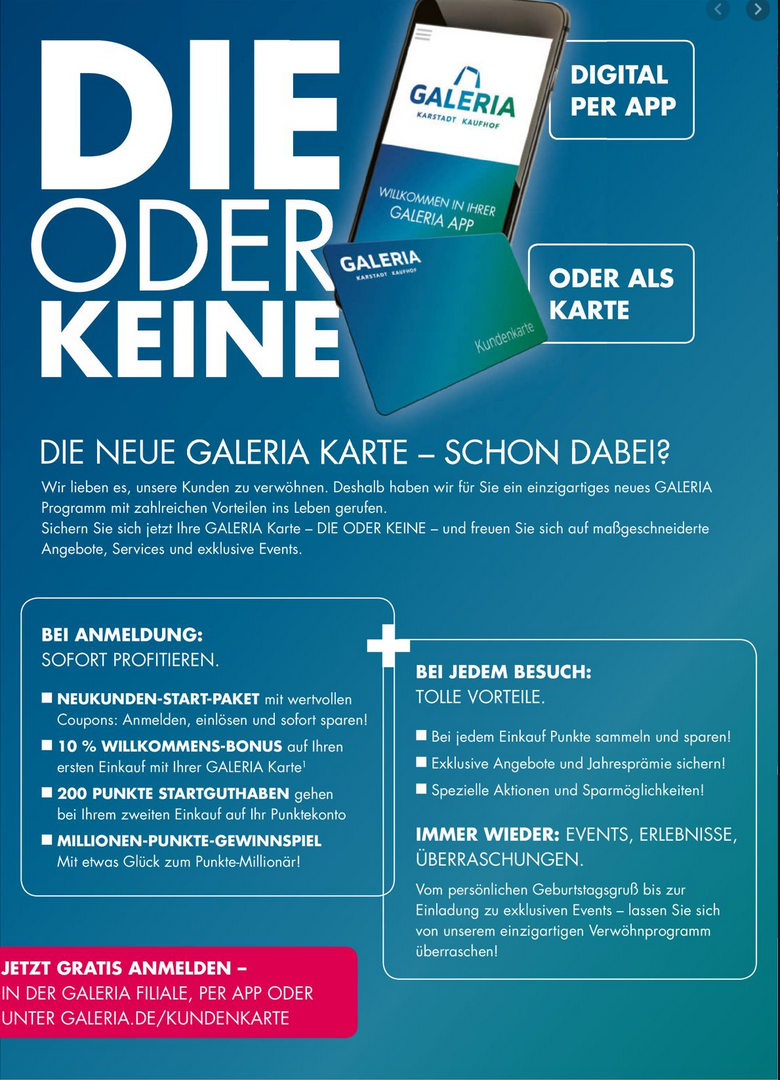
So this means it is likely that the image was taken in early 2020 before the lockdown began when Galeria Kaufhof were heavily promoting their new loyalty card. I’d be slightly more cautious about using this ad to answer the pre/post lockdown question though. The Galeria Kaufhof app is still available and was updated as recently as May 4th, so the fact that it was launched before lockdown does not automatically mean that the ad would disappear when lockdown ended. By itself this advert cannot be conclusive, but when we put it together with the other details it tends to support the idea that the image was taken before lockdown.
6. The Fountain
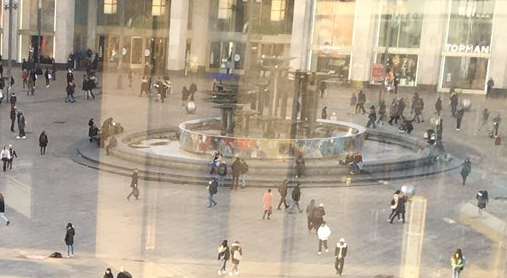
In the original image the fountain is dry and the water appears to be turned off, indicating it is out of use. However a quick search for recent images of Alexanderplatz on Twitter shows this image from May 9th, just three days after the lockdown restrictions were lifted (via @PaulGaebler):
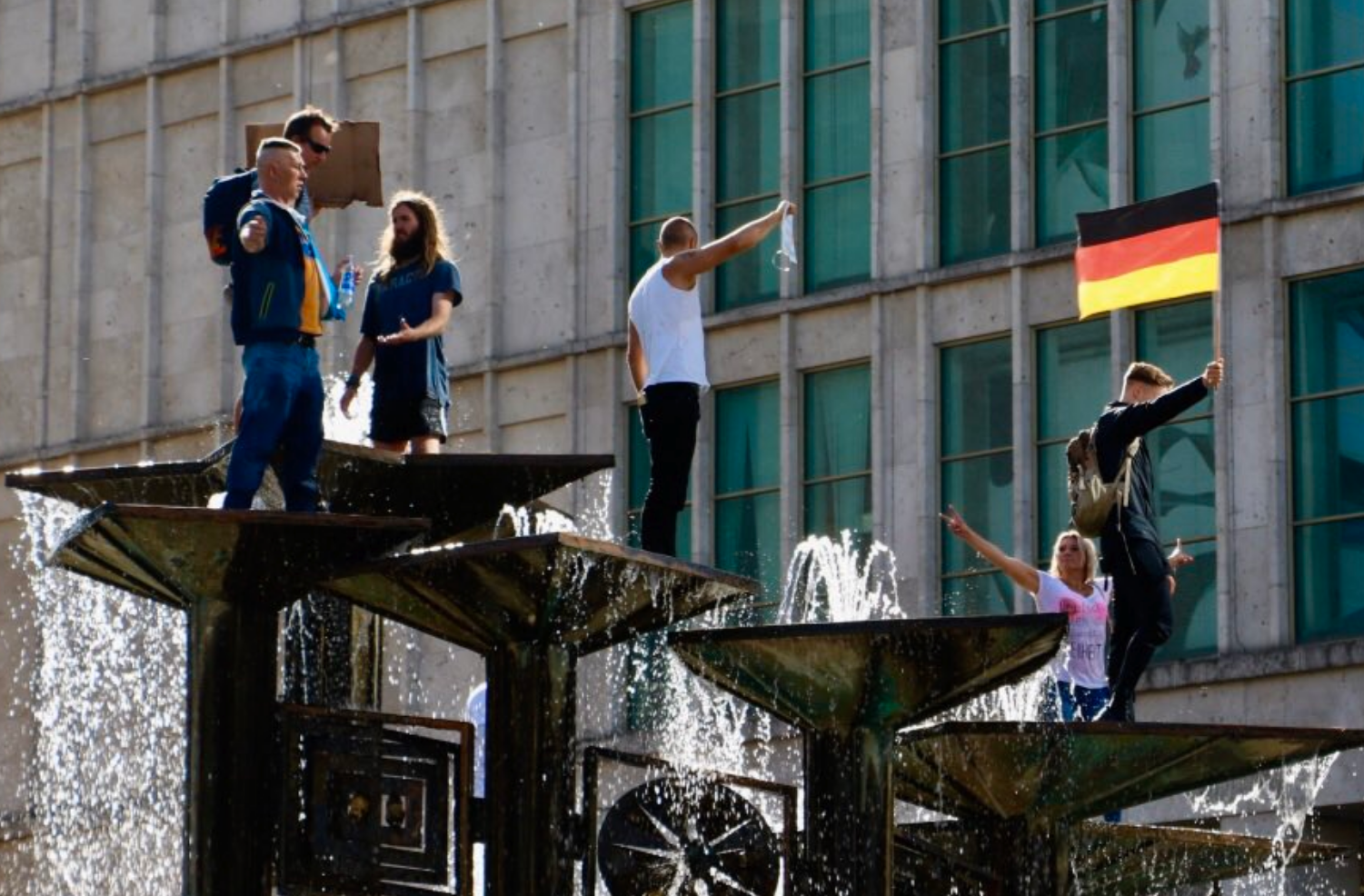
The water has been turned back on, so again this tends to suggest that the original image was more likely to be taken before the lockdown rather than afterwards.
7. The Bus
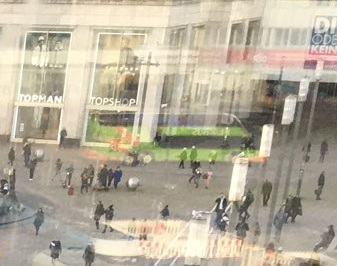
There’s an orange and green bus reflected in the window as Julia took the photo. A little Google image searching for orange and green bus Berlin quickly leads to the travel company Flixbus:
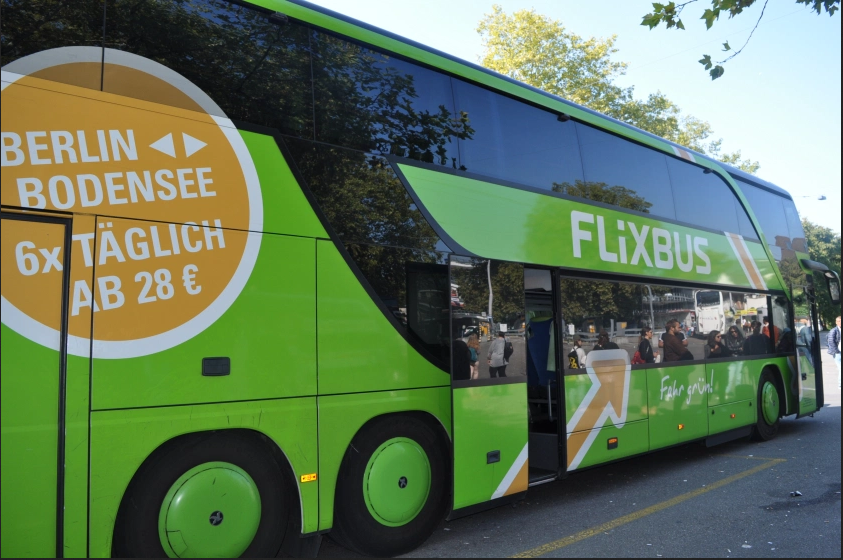
Their website tells us that they suspended their operations on March 17th this year:

As of today, it seems that Flixbus is still suspended. Although they have made a few journeys to help return people to their home countries during lockdown they still haven’t resumed operations so the presence of a Flixbus in central Berlin is a strong indicator the image was taken before lockdown started.
8. Crowd Behaviour
Even though lockdown in Germany is now ending, there are a lot of restrictions still in place, including keeping a distance of 1.5 metres from other people and wearing face masks when out shopping:
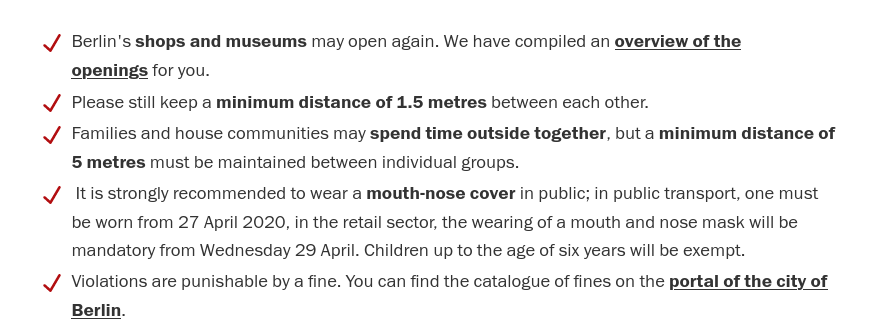
Contrast this with the behaviour of the people in the photograph:

Not a single face mask to be seen, and not much social distancing either. While there is a minority of people in Germany who are opposed to the lockdown regulations, such widespread and casual disregard for rules and social customs would be very un-German, wouldn’t it? The only sensible conclusion is that this photo was taken before the Coronavirus restrictions were put in place and masks and distancing were not a concern.
For my other Quiztime posts, click here.
